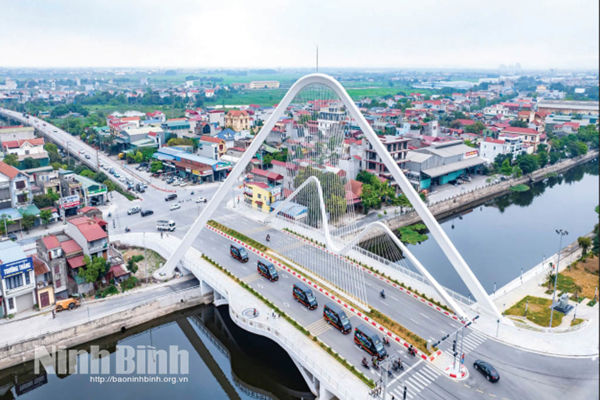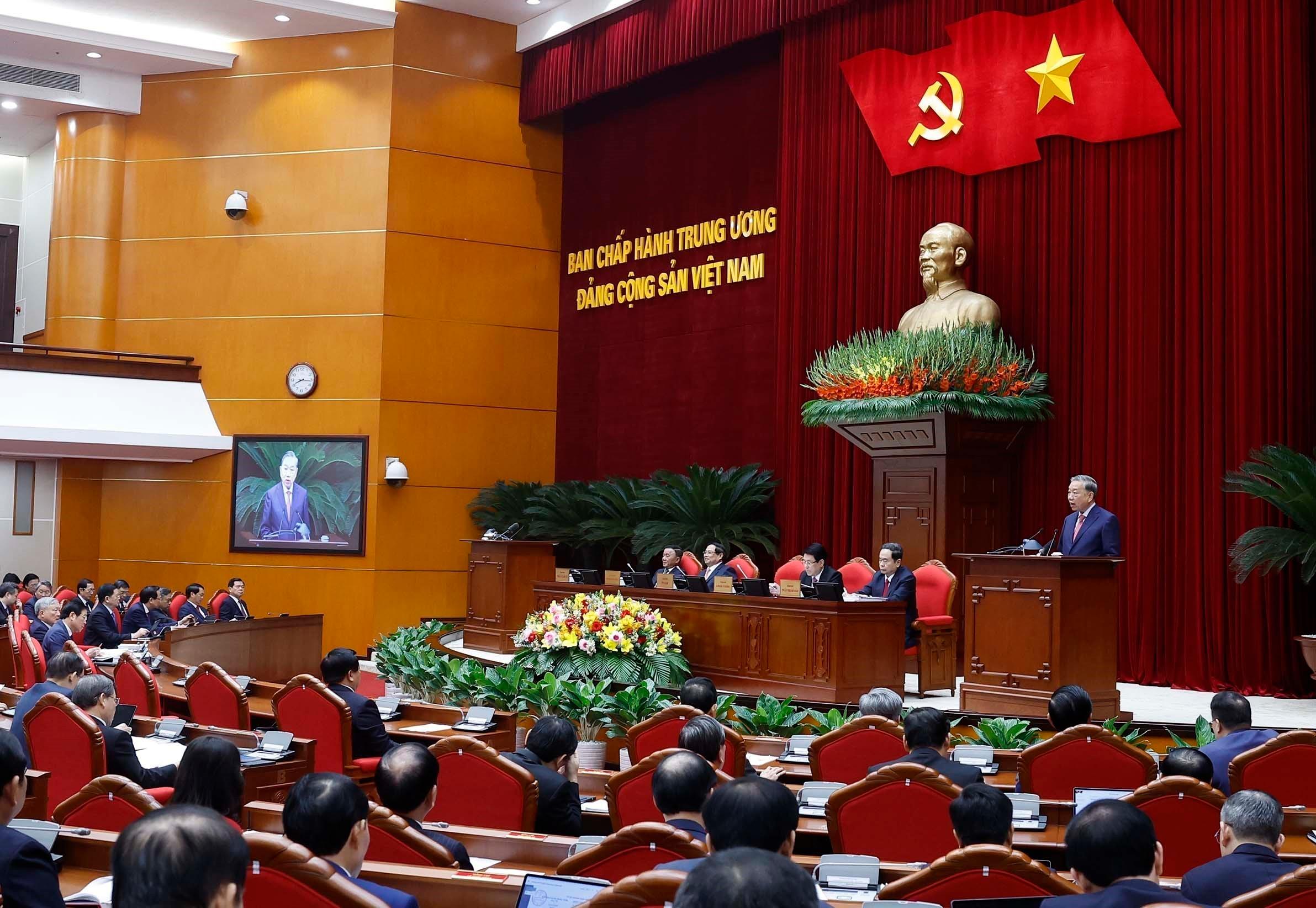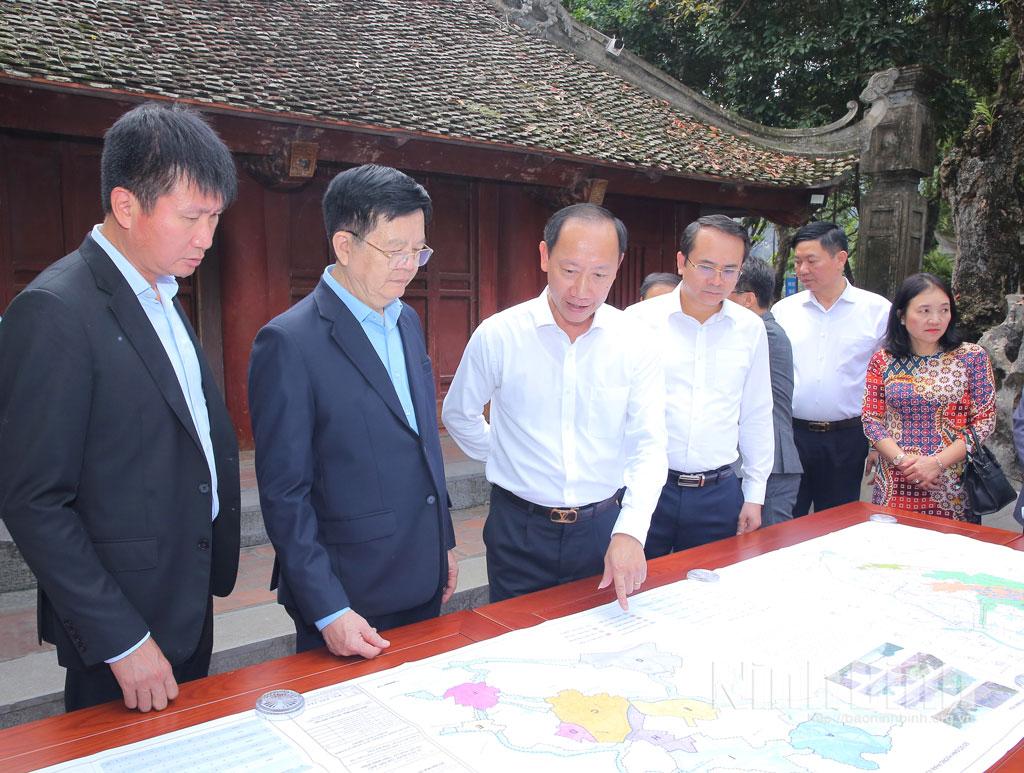This is not only an administrative change but also a historic opportunity to liberate all resources, fully promote the outstanding potential, competitive advantages, and unique identity of the land of culture and heroes, opening up a new development space, helping Ninh Binh to rise strongly in the era of national development.
Optimising potential and competitive advantages
Resolution No. 60-NQ/TW dated April 12, 2025 of the 11th meeting of the 13th Party Central Committee agreed to merge the provinces of Ha Nam, Ninh Binh, and Nam Dinh into one provincenamed Ninh Binh, with the political-administrative centre located in Ninh Binh province today.
After the mergence, new Ninh Binh province has a total natural area of about 3,942 km2, a population of more than 4.4 million people, becoming one of the largest provinces in the country (the 6th largest in the country if calculated according to current provinces), creating a larger development space, capable of reaching regional and international levels.
What makes new Ninh Binh province special is the integration of unique cultural and historical spaces: Ninh Binh is proud of the ancient capital of Hoa Lu with a thousand years of sacred history, and has the Trang An Scenic Landscape Complex - a unique mixed world heritage.
Nam Dinh is the birthplace of the heroic Tran Dynasty, the cradle of the worship of the Three Palaces Mother Goddesses and a land of learning with an illustrious tradition of mandarin examinations.
Ha Nam bears the ancient Dong Son cultural imprint, where many relics and festivals with strong identities are preserved.
When these three cultural streams blend,new Ninh Binh province not only possesses nearly 5,000 relics but is also a treasure trove of living heritage, opening up unlimited space for developing heritage tourism, cultural industry and creative economy.
On the other hand, the newly established Ninh Binh province connects the strengths of all three localities: a synchronous and modern transportsystem of roads, railways and sea routes.
After the mergence, the new development space of the province is expanded, with an important strategic geographical location, being the "gateway" to the South of the Northern Delta, belonging to the economic corridors: North-South (North-South Expressway, Ninh Binh-Hai Phong Expressway, National Highway 1, National Highway 10, National Highway 45); the Gulf of Tonkin coastal economic corridor and the East-West economic corridor (including: National Highway 21 and Nam Dinh-Lac Quan axis; National Highway 12B and Nho Quan-Kim Son axis).
This is the transit connection point of three major economic regions: the Red River Delta, the North Central Coast and the Central Coast, and the Northern midlands and mountainous region (Northwest region).
After the mergence, new Ninh Binh province has a sea and coastal space that is nearly five times larger than old Ninh Binh province, with a coastline length increasing from 15km to more than 88km, reaching out to the Gulf of Tonkin.
This creates favourable conditions for the synchronous connection of strategic framework infrastructure and especially the expansion of the space for marine economic development.
The mergence of the three provinces also opens up a large and promising economic development space when in recent years these provinces have made significant progress in renewing the growth model.
By the end of 2024, the economic scale of the whole region is estimated to reach 310.28 trillion VND, ranking 11th out of 34 provinces and cities after the mergence; budget revenue reached 55.01trillion VND, ranking 6th out of the total 34; total export turnover reached 17.56 billion USD, accounting for 12.3% of the Red River Delta region and 4.3% of the total export turnover of the whole country.
On the other hand, the three provinces have their own strengths: Ninh Binh with the Centre for Heritage and Innovation; Nam Dinh with the Centrefor Culture, Education and Marine Economic Potential. Ha Nam – the Centre for High-Tech Industry. Now, these "pieces" will be closely linked, forming a more synchronous and effective value chain of production and services, tourism, and culture.
In particular, after the mergence, the new Ninh Binh Provincial Party Organisationwill have a larger scale and a large number of Party members. This consensus will create a unified, strong bloc, capable of overcoming all challenges and creating new breakthroughs for the region.
Aspiration to become a centrally-governed city
With its outstanding potential and advantages after the mergence, Ninh Binh province has set a goal of becoming a centrally-governed city. Therefore, the mergence is not only a story of macroeconomics or territorial planning, but also a story of the aspirations of more than 4.4 million people in the three provinces after the mergence.
They expect a more streamlined, transparent, and more efficient administrative apparatus. They look forward to a better quality of life, with synchronous infrastructure, convenient transportation, and education and healthcare that are invested in commensurately.
According to Dr. Architect Nguyen Thu Hanh, President of the Association of Sustainable Tourism Development Sciences, the mergence of the three provinces of Ha Nam, Nam Dinh, and Ninh Binh opens up a great opportunity: Repositioning Ninh Binh tourism with a new scale and stature, exploiting untapped potential, promising to create a breakthrough for inter-regional tourism development.
It is time to restructure the development space, reorient the industries and fields based on the outstanding potential,competitive advantages, and unique identities of each province today with the vision of building new Ninh Binh province into a centre of the region and the whole country, aiming to become a centrally-run city.
From July 1, 2025, Ha Nam province, Ninh Binh province, and Nam Dinh province will officially "come under one roof". In the common house, people expect to continue to unleash enormous resources, turn difficulties and challenges into motivation, and promote the desire to rise up.











